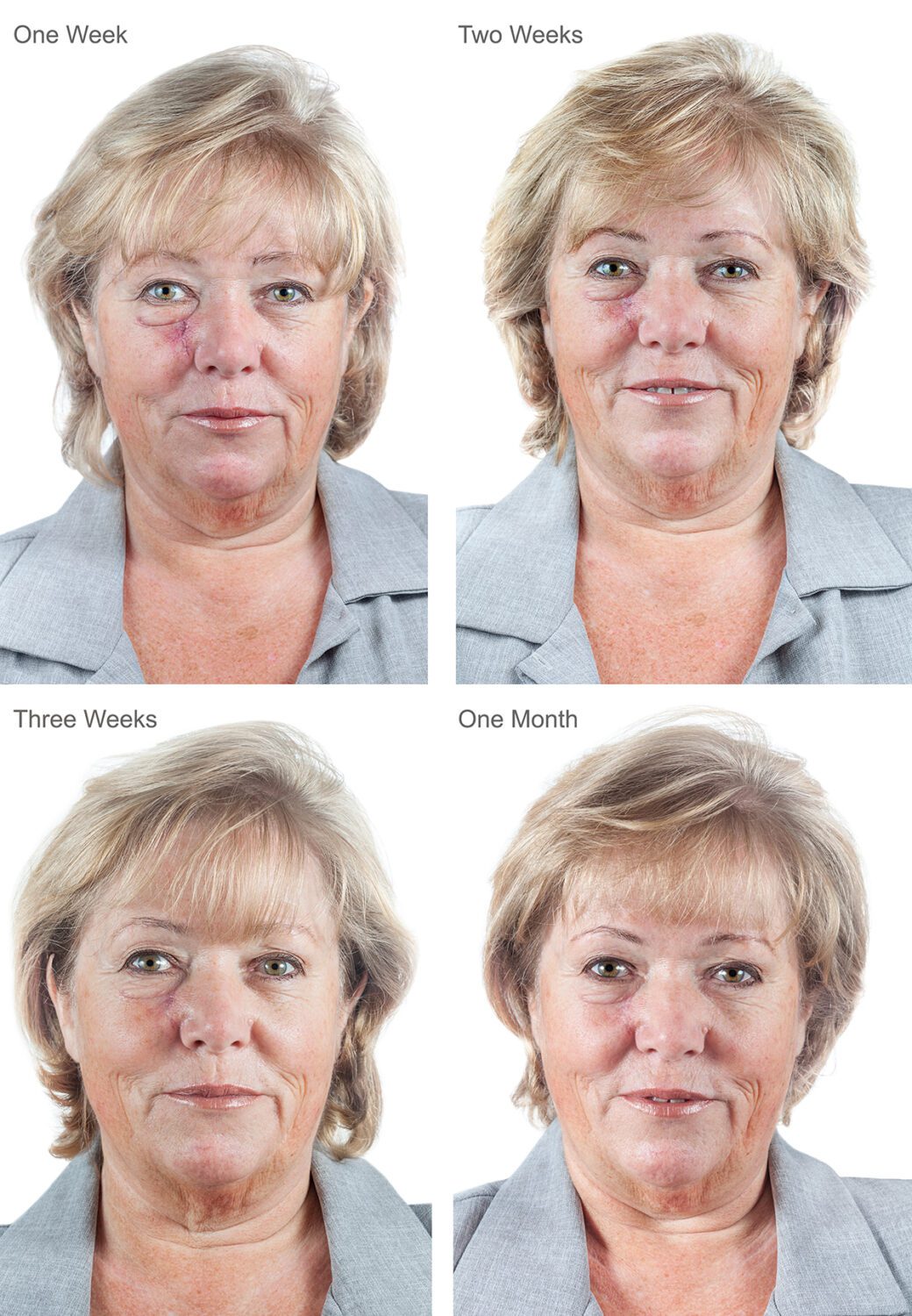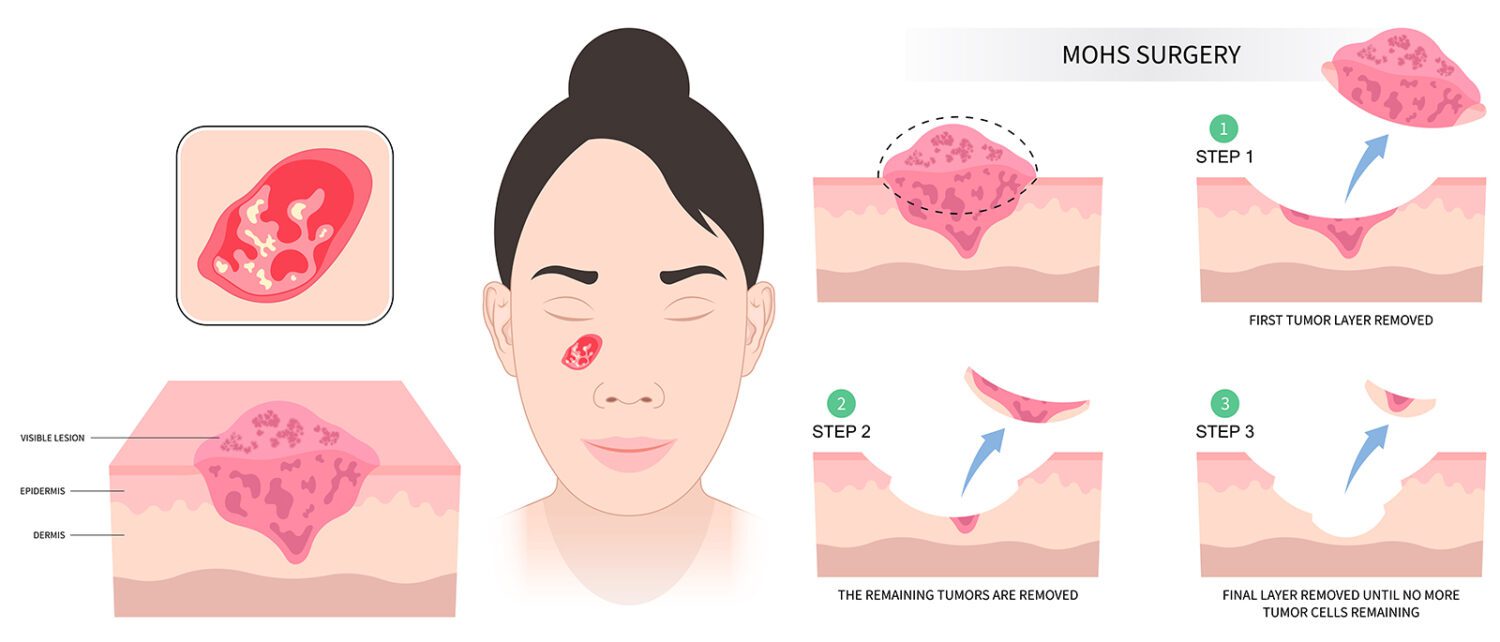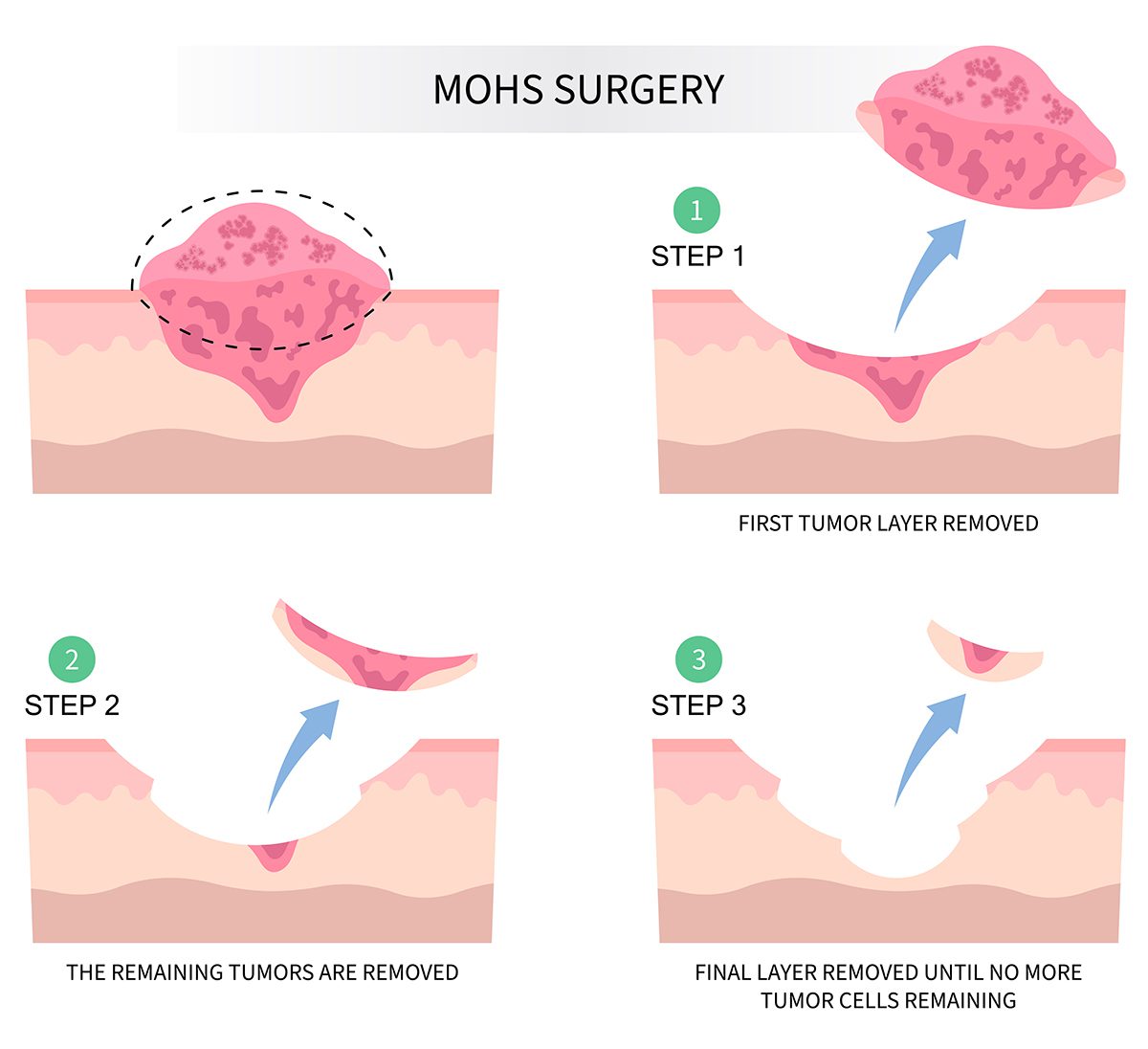How Mohs Surgery Works
Living in sunny Myrtle Beach and enjoying all the outdoor activities has its risks if you aren’t taking the proper precautions. Sun exposure can cause skin cancer to develop, often on areas of the skin that are always visible, such as the face, ears, scalp, arms, and upper trunk.
Naturally, if you receive a skin cancer diagnosis, you may have a fear of disfiguring surgery.
“What will my scars look like?”
“Will they be the first thing someone notices about me?”
Fortunately, Dr. Yumeng Li at CMC Dermatology is fellowship trained in a surgical procedure that minimizes the long-term impact on your looks. Dr. Li is filling us in on Mohs Micrographic Surgery and how this cutting-edge procedure successfully eliminates skin cancer with the least amount of tissue loss and disfigurement.
What is Mohs Surgery?
Mohs surgery is the most advanced and effective treatment for skin cancer available today. The procedure involves removing the cancerous tissue layer by layer while examining each layer under a microscope to ensure that all cancer cells have been removed. This process is repeated until the entire tumor has been removed. By examining the tissue in this way, the Mohs surgeon can be sure that all cancerous cells have been removed while preserving as much healthy tissue as possible.
“Mohs micrographic surgery is a very specialized skin cancer surgery,” explains Dr. Li. “When I perform this procedure, I take only a slice of the skin of what is clinically evident as skin cancer, while trying to preserve as much healthy tissue as possible. This tissue slice is then processed and analyzed under a microscope as your surgery is taking place. I am checking the margins of skin cancer while the surgery is taking place. If the edges (the margin) of the slices are not free of cancer, we can keep removing slices until those edges are cancer free. We are not taking any more tissue than what is necessary to achieve 100% clear margins.”
“When my patients leave the clinic or hospital, they leave knowing there is no skin cancer left,” describes Dr. Li. “It’s a huge relief for patients because most Mohs surgeries have 98-99% clearance rates for the most common types of skin cancers, such as basal and squamous cell carcinoma. Mohs is really the best way to get margin control and make sure your skin cancer is cleared.”
What to expect?
Mohs surgery is typically done as an outpatient procedure. “You arrive first thing in the morning or afternoon,” details Dr. Li. “You can take all your medications and eat normally since the procedure is done under local anesthesia, which is almost like being at the dentist’s office. You may want to set aside the entire day for your surgery because the procedure time can vary. That’s because I’ll take a layer of the small margin of the skin cancer and then process it and analyze it in the Mohs lab, and read the pathology. If the tumor is still there, I may have to go back and take another layer and this process keeps repeating until the skin cancer is all clear. That being said, most patients are in and out within 2-4 hours.”
Healing, reconstruction, and scarring
Natural healing, which doesn’t even involve stitches, beats reconstruction for many small wound locations like the bowl of the ear or the top of the scalp. Soft tissue around the wound naturally contracts and closes in a way that can create less visible scarring than stitches after very minor surgery.
Most wounds will have to be stitched close to achieve the best cosmetic outcome. “If the wound is too big to heal well on its own, I will use multiple layers of stitches to bring the wound edges together so that the underlying tissue can heal properly,” explains Dr. Li.
If a wound is so large that it is impossible to pull it shut without overstressing the surrounding tissue, skin from another part of the body can be grafted onto the surgery site. Another option is that the skin surrounding the surgery site can be cut to create a skin flap that is then sutured to cover the original wound.
“Depending on the size and location of your surgical site, you and I will decide together if it’s best to borrow tissue from other parts that are adjacent to your surgical site or if it would be better to pull from distant, less noticeable areas to help repair the defect.”
“Fellowship-trained Mohs surgeons undergo rigorous training to make sure that we provide you with the best cosmetic outcome,” Dr. Li stresses. “So scarring is always number one on my mind. I want to make sure you’re happy with your procedure afterward, so I’ll often hide the scars in relaxed tension lines like wrinkles that you already have on your face or where you might develop wrinkles in the future. I’m looking for the best way to hide the scars in places and in ways that are the least cosmetically noticeable. But of course, with any procedure where we cut into the skin, it will form a scar and that’s just the nature of things. When you get a cut you have a scar there, but we do our best to try to minimize that.”
Post Surgery

Mohs surgery- post-operative pain
“Mohs surgery is very well tolerated,” says Dr. Li. “Usually, patients can go home and use ice packs and take Tylenol and ibuprofen and that’s enough for pain management. We ask that you take it easy for a few days and drink plenty of fluids. Anything that increases your blood pressure can increase your risk of bleeding complications so avoid strenuous exercise, lifting heavy objects, and things like that.”
Be alert for any signs of infection, which include:
- Swelling
- Excessive tenderness
- Redness or red streaks
- Heat
- Drainage from the wound (pus)
Avoid drinking alcohol as it can increase your risk of postoperative bleeding and don’t smoke as this can affect surgical repairs and impede wound healing.
Advantages of Mohs Surgery
Mohs Surgery offers several distinct advantages for the treatment of skin cancer.
- There is a complete removal of cancerous cells during surgery since the pathology is done then and there.
- The loss of healthy skin tissue is minimized since each layer is examined microscopically until clean margins have been reached.
- The precise removal of the cancerous tissue allows for the best appearance and result.
- Usually the repair of the cancer site can be done the same day as the removal.
- Mohs Surgery can offer a skin cancer cure when other treatments have failed.
- Having Mohs Surgery can eliminate the need for additional treatments, which saves money as well as eliminates the stress and anxiety of prolonged treatment time.
Expect and get the best skin cancer care
With recent estimates indicating that one in five Americans will be diagnosed with skin cancer in their lifetime, it’s more important than ever to know what treatments are best.
Dr. Yumeng Li, a board-certified Mohs micrographic surgeon and dermatopathologist with CMC Dermatology provides comprehensive and cutting-edge skin cancer care and dermatology services to give you the options you need to make the best decision for you and your skin. You can expect sincere, compassionate, reliable care with excellent results.
Call 843-234-8700 to schedule your skin cancer screening appointment today.
Yumeng Li, MD, MS
ACGME Fellowship trained in Mohs Micrographic Surgery/Cosmetic Dermatology
ACGME Fellowship trained in Dermatopathology
ASDS Fellowship trained in Cosmetic Dermatology
Board certified in Dermatology and Dermatopathology







